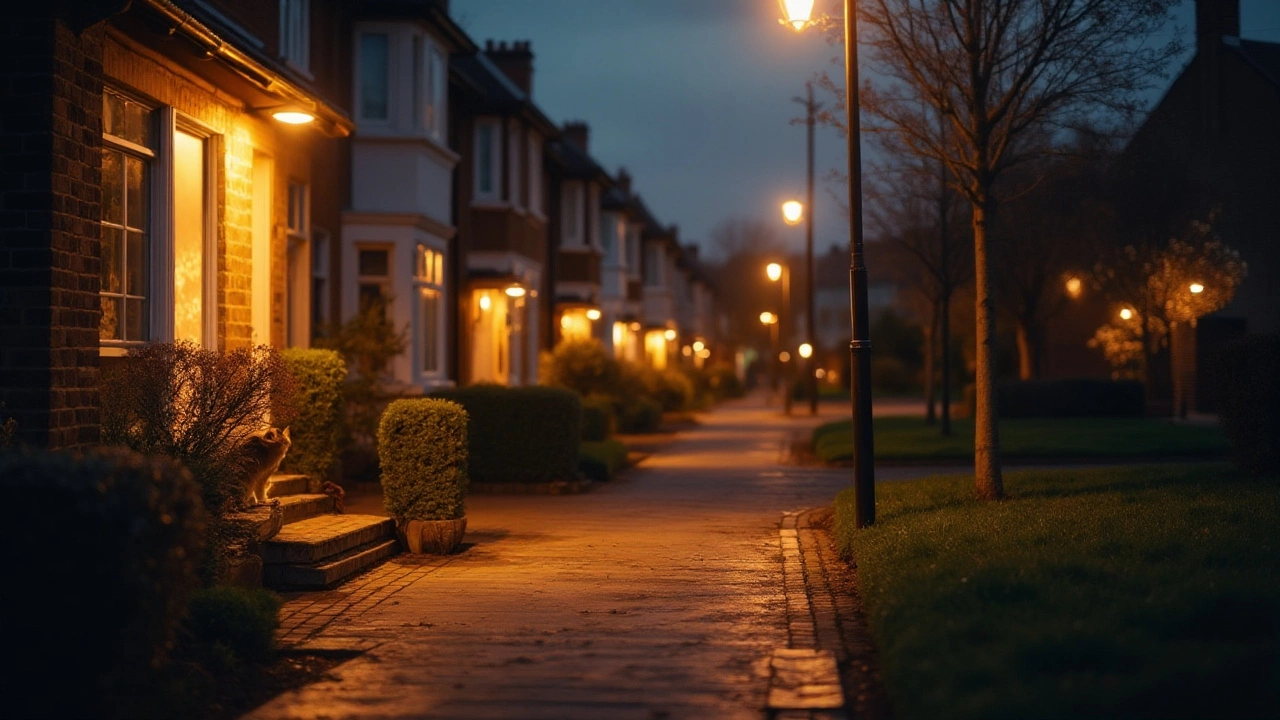When you think about keeping your property safe, the first thing that comes to mind is a good lighting plan. The right house lights not only make your home look inviting, they scare off burglars, help you see steps at night, and can even cut your electricity bill. In this guide we’ll walk through the basics of picking, placing, and maintaining lights so you get the most bang for your buck.
There are three main categories to consider: security floodlights, motion‑sensor spotlights, and general‑purpose LED bulbs. Floodlights throw a wide beam and are perfect for driveways or backyards. Motion‑sensor spotlights turn on only when they detect movement, which saves power and adds a surprise factor for any intruder. LED bulbs are the go‑to for indoor rooms because they use less energy and last years longer than traditional bulbs. Look for a colour temperature around 3000‑4000 K for a warm but clear glow.
Placement matters more than the bulb you choose. Mount outdoor lights at a height of 8‑10 feet so the beam reaches the ground without creating blind spots. Aim lights slightly downward (about a 30‑degree tilt) to avoid glare on the street while still lighting up the area around doors and windows. For motion sensors, point them toward the most vulnerable entry points – front door, side gate, or garage – and set the detection range to about 10‑15 metres.
Don’t forget the corners. A common mistake is leaving the front porch or back patio in shadow. Adding a low‑profile wall‑mount light can fill those gaps without being obtrusive. If you have a garden, low‑lying path lights on a timer keep the walkways visible and create a welcoming vibe for guests.
Smart control can make your lighting routine effortless. Most modern floodlights and sensors connect to Wi‑Fi, letting you turn them on remotely or set schedules from your phone. This means you can have lights on while you’re away on vacation and off when you’re home, saving energy without sacrificing safety.
Energy savings are easy once you switch to LEDs. A 10‑watt LED replaces a 60‑watt incandescent and gives the same brightness. Over a year, the cost difference can be dozens of pounds, especially if you have several fixtures. Pair LEDs with dimmers or motion sensors for an extra boost.
Maintenance is straightforward. Clean the lenses every few months – dust and spider webs reduce light output. Check the battery (if your sensor uses one) and replace it before it gets low. Most smart lights send an alert to your phone when they need attention, so you won’t have to guess when something’s wrong.
Finally, think about aesthetics. A well‑lit home looks more inviting and can increase curb‑side value. Choose fixtures that match your property style – sleek black for modern homes, classic brass for period houses – and you’ll get both security and curb appeal in one package.
With the right mix of floodlights, motion sensors, and energy‑saving LEDs, your house lights can do more than just brighten a room – they become a silent guardian that works day and night. Start mapping out your lighting plan today and see how a few smart choices can make a big difference.

This article explores whether leaving lights on can deter burglars from targeting homes. It discusses the psychology behind light as a deterrent, the effectiveness of lights compared to other security measures, and offers practical tips for using lighting in home security. Readers will gain insight into various strategies for making their homes less attractive to potential intruders. It aims to provide actionable advice for safeguarding homes against burglary threats.